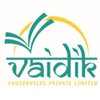Java Full Stack Developer
100+ Java Full Stack Developer Interview Questions and Answers
Asked in Positive Thinking

Q. Explain how the garbage collector works.
Garbage collector is a program in Java that automatically manages memory by reclaiming unused memory.
Garbage collector runs in the background and identifies objects that are no longer needed.
It frees up memory by removing these unused objects, making the memory available for new objects.
There are different types of garbage collectors in Java such as Serial, Parallel, CMS, G1, etc.

Asked in Solitaire Infosys

Q. What is java and features of java
Java is a high-level programming language known for its platform independence and object-oriented features.
Java is platform-independent, meaning it can run on any device with a Java Virtual Machine (JVM)
Java is object-oriented, allowing for the creation of reusable code and modular programs
Java is known for its robust standard library, which includes tools for networking, I/O, and more
Asked in Flynaut SaaS

Q. What is the Map interface in Java?
The Map interface in Java represents a collection of key-value pairs, allowing efficient data retrieval based on keys.
Maps store data in key-value pairs, e.g., Map<String, Integer> map = new HashMap<>();
Common implementations include HashMap, TreeMap, and LinkedHashMap.
Keys in a Map must be unique, while values can be duplicated.
You can retrieve a value using its key, e.g., Integer value = map.get('key');
Maps do not maintain any order of elements, except for TreeMap (sorted b...read more

Asked in Verizon

Q. What is an interface in Java?
Interface in Java is a blueprint of a class that defines a set of methods without implementation.
An interface can be used to achieve abstraction in Java
All methods in an interface are public and abstract by default
A class can implement multiple interfaces
Interfaces can also have default and static methods
Example: interface Shape { void draw(); }

Asked in Deutsche Bank

Q. Write a code snippet to create two beans.
Creating two beans in Java using Spring framework
Use @Component annotation to define a bean
Specify the bean name using @Component("beanName")
Use @Autowired annotation to inject one bean into another
Asked in Adjecti Solutions

Q. How do you connect a database to Spring?
Connecting a database to Spring involves configuring data sources, using Spring Data, and managing transactions effectively.
Add Dependencies: Include Spring Data JPA and your database driver in your Maven or Gradle configuration. Example: <dependency> for MySQL.
Configure Data Source: Set up your application.properties or application.yml file with database connection details. Example: spring.datasource.url=jdbc:mysql://localhost:3306/mydb.
Create Entity Classes: Define JPA enti...read more
Java Full Stack Developer Jobs




Asked in Accenture

Q. How proficient are you in Java and UI development?
I have strong knowledge and experience in Java programming and UI development.
Proficient in Java programming language, including core concepts like OOP, multithreading, and collections
Skilled in developing UI using technologies like HTML, CSS, JavaScript, and frameworks like React or Angular
Experience in integrating backend Java code with frontend UI for full stack development
Familiar with UI design principles and responsive web design practices

Asked in Comviva Technology

Q. What are heap and stack memory?
Heap and stack memory are two types of memory in computer systems. Heap memory is used for dynamic memory allocation, while stack memory is used for static memory allocation.
Heap memory is used for storing objects and is managed by the JVM. It is larger in size compared to stack memory.
Stack memory is used for storing method calls, local variables, and is limited in size. It follows Last In First Out (LIFO) order.
Example: When an object is created using the 'new' keyword, it ...read more
Share interview questions and help millions of jobseekers 🌟


Asked in Deutsche Bank

Q. Transaction Management in Hibernate
Transaction management in Hibernate ensures ACID properties for database operations.
Hibernate provides built-in transaction management support through Session interface.
Transactions can be managed programmatically using beginTransaction(), commit(), and rollback() methods.
Hibernate also supports declarative transaction management using annotations like @Transactional.
Transactions in Hibernate ensure Atomicity, Consistency, Isolation, and Durability for database operations.

Asked in Deutsche Bank

Q. What is the difference between an attached entity and a detached entity?
Attached entities are actively managed by the persistence context, while detached entities are no longer actively managed.
Attached entities are being managed by the persistence context and any changes made to them will be automatically synchronized with the database.
Detached entities are not being managed by the persistence context and changes made to them will not be automatically synchronized with the database.
Entities become detached when the persistence context is closed,...read more

Asked in TCS

Q. What are the OOP concepts in Java?
Object-oriented programming concepts in Java include inheritance, encapsulation, polymorphism, and abstraction.
Inheritance allows a class to inherit properties and behavior from another class.
Encapsulation involves bundling data and methods that operate on the data into a single unit.
Polymorphism allows objects to be treated as instances of their parent class.
Abstraction hides the implementation details and only shows the necessary features of an object.

Asked in Accenture

Q. Write a Java code to find the second largest element in an array.
Java code to find second largest element in an array
Sort the array in descending order
Return the element at index 1 as the second largest element
Asked in ProAzure Software Solutions

Q. What is the difference between the `finally` block and the `final` keyword in Java?
Finally is a block for cleanup in exceptions; final is a modifier for constants, methods, or classes.
finally is used in exception handling to execute code after try/catch blocks, ensuring cleanup.
Example: try { // code } catch (Exception e) { // handle } finally { // cleanup code }
final is a keyword that makes a variable, method, or class unchangeable or non-overridable.
Example: final int x = 10; // x cannot be changed later
final class cannot be subclassed, final method canno...read more

Asked in Nelito System

Q. Tell me about Spring annotations.
Spring annotations are used to provide metadata to Spring framework classes and components.
Annotations are used to configure Spring beans, dependency injection, AOP, and more
Examples include @Component, @Autowired, @RequestMapping, @Service, @Repository
Annotations help in reducing XML configuration and make code more readable and maintainable


Q. What is artificial intelligence (AI)?
Artificial Intelligence (AI) is the simulation of human intelligence processes by machines, especially computer systems.
AI encompasses machine learning, natural language processing, and robotics.
Examples include virtual assistants like Siri and Alexa.
AI is used in healthcare for diagnostics and personalized medicine.
Self-driving cars utilize AI for navigation and decision-making.
AI algorithms can analyze large datasets to identify patterns.

Asked in Vaidik Eduservices

Q. What is your understanding of Java?
Java is a versatile, object-oriented programming language used for building applications across various platforms.
Platform Independence: Java applications can run on any device with a Java Virtual Machine (JVM). Example: Write once, run anywhere.
Object-Oriented: Java supports concepts like inheritance, encapsulation, and polymorphism. Example: Creating classes and objects.
Rich API: Java provides a comprehensive set of libraries for tasks like networking, I/O operations, and G...read more

Asked in MagicBricks

Q. Why do you want this job?
I am excited about this role because it aligns with my skills and passion for developing innovative web applications.
I have a strong background in Java and related technologies, which I believe will allow me to contribute effectively from day one.
I am passionate about full stack development, as it allows me to work on both front-end and back-end, creating seamless user experiences.
The company's commitment to innovation and quality resonates with my personal values, and I want...read more

Asked in Intellect Design Arena

Q. How can you sort a list of students using the Stream API?
Sort a list of students using Java Stream API
Use the sorted() method to sort the list based on a comparator
Use the Comparator.comparing() method to specify the sorting criteria
Use the collect() method to collect the sorted elements back into a list

Asked in TCS

Q. What are microservices?
Microservices are a software architectural style that structures an application as a collection of small, loosely coupled services.
Microservices are independent, self-contained components that can be developed, deployed, and scaled independently.
Each microservice focuses on a specific business capability and communicates with other microservices through APIs.
Microservices promote flexibility, scalability, and resilience in software development.
Examples of microservices includ...read more
Asked in Flynaut SaaS

Q. What is JDBC and what are the steps to use it?
JDBC stands for Java Database Connectivity, which is a Java API for connecting and executing queries on a database.
JDBC is used to connect Java applications to databases.
Steps in JDBC include loading the driver, establishing a connection, creating a statement, executing queries, and handling results.
Example: Class.forName("com.mysql.jdbc.Driver"); Connection con = DriverManager.getConnection("jdbc:mysql://localhost:3306/database", "username", "password"); Statement stmt = con...read more

Asked in HCLTech

Q. What is a lambda expression?
A lambda expression is a concise way to represent an anonymous function in Java, enabling functional programming features.
Syntax: (parameters) -> expression or (parameters) -> { statements; }
Used primarily to implement functional interfaces.
Example: (x, y) -> x + y is a lambda that adds two numbers.
Can be used with Java's Stream API for operations like filter, map, and reduce.
Enhances code readability and reduces boilerplate code.

Asked in Infosys

Q. What is multithreading?
Multithreading is a programming concept that allows concurrent execution of multiple threads within a single process.
Improves application performance by utilizing CPU resources efficiently.
Allows multiple tasks to run simultaneously, e.g., downloading files while processing data.
Java provides built-in support for multithreading through the Thread class and Runnable interface.
Synchronization is crucial to prevent data inconsistency when multiple threads access shared resources...read more

Asked in Deutsche Bank

Q. Different Types of Autowiring
There are three types of autowiring in Spring: byType, byName, and constructor.
byType: Spring looks for a bean of the same type and injects it.
byName: Spring looks for a bean with the same name and injects it.
constructor: Spring looks for a constructor and injects the arguments.

Asked in Deutsche Bank

Q. How do you filter a List using Streams in Java?
Filter a List using Streams in Java
Use the filter() method to apply a predicate to each element in the stream
Use collect() method to convert the stream back to a List
Example: List<String> names = Arrays.asList("Alice", "Bob", "Charlie"); List<String> filteredNames = names.stream().filter(name -> name.startsWith("A")).collect(Collectors.toList());

Asked in Deutsche Bank

Q. How would you sort an Employee HashMap?
Sort an Employee HashMap based on keys or values
Use TreeMap to automatically sort by keys
Use Comparator to sort by values
Convert HashMap to List and then sort

Asked in TCS

Q. what is your Expected CTC
My expected CTC is based on my experience, skills, and the market rate for Java Full Stack Developers.
My expected CTC is in line with industry standards for Java Full Stack Developers.
I have considered my experience, skills, and the current market trends while determining my expected CTC.
I am open to negotiation based on the overall compensation package offered by the company.

Asked in Intellect Design Arena

Q. What is a final class?
A final class is a class that cannot be extended or subclassed.
Final classes are often used to prevent inheritance and ensure that the class cannot be modified or extended.
Final classes are typically marked with the 'final' keyword in Java.
Example: 'String' class in Java is a final class, meaning it cannot be extended.
Asked in Innova Esi

Q. What is Docker and Kubernetes?
Docker is a platform for containerization, while Kubernetes is an orchestration tool for managing those containers.
Docker allows developers to package applications and their dependencies into containers.
Kubernetes automates the deployment, scaling, and management of containerized applications.
Docker containers are lightweight and can run consistently across different environments.
Kubernetes provides features like load balancing, service discovery, and automated rollouts.
Examp...read more

Asked in NRC

Q. Explain the React lifecycle, focusing on the useEffect hook.
useEffect is a React hook that allows performing side effects in function components.
useEffect is used to perform side effects in function components, such as data fetching, subscriptions, or manually changing the DOM.
It runs after every render by default, but you can specify dependencies to control when it runs.
To mimic componentDidMount, you can pass an empty array as the second argument to useEffect.
To mimic componentWillUnmount, you can return a cleanup function from useE...read more

Asked in Nagarro

Q. Promises vs Observables
Promises are used for asynchronous programming in JavaScript, while Observables are used for reactive programming.
Promises represent a single value that may be available now or in the future.
Observables represent a stream of values that can be emitted over time.
Promises are eager, meaning they start executing as soon as they are created.
Observables are lazy, meaning they only start executing when subscribed to.
Promises can be chained using .then() to handle success or failure...read more
Interview Questions of Similar Designations
Interview Experiences of Popular Companies





Top Interview Questions for Java Full Stack Developer Related Skills

Calculate your in-hand salary
Confused about how your in-hand salary is calculated? Enter your annual salary (CTC) and get your in-hand salary


Reviews
Interviews
Salaries
Users










